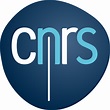Wreck One June/July 2016 Project.
Page 2
Later in the survey further problems with the Toughbook meant that we had to use another laptop with Windows 10 software and then a smaller notebook with XP on it. These laptops were not splash proof and so they were positioned in a water proof explorer case with a lid and waterproof covering over the operator and the computer. Further challenges with these laptop were that the battery did not last long and with no mains power we had to use solar panels to provide power to charge the battery. The side scan program worked well with this but would not connect to the external GPS, unfortunately resulting in no GPS coordinates for the side scan images. All of these computer glitches and small open boat resulted in challenges, which hampered the efficiency of the survey.
ADMAT's Imagenex Sportscan Side Scan Sonar, one of the few units capable of operating out of small boats ond off 12 volts
The resulting search area was approximately 900 meters by 900 meters (~.81 square kilometres). the Team then created gridlines within the search area to enable a methodical and systematical search. Because prevailing winds are from the East / North-East, the grid lines were created running East-West; and because of the approximate size of the shipwreck, the average depth of the search grid (~10 meters), and the width of our side-scan sonar cones, the East-West gridlines were spaced 20 meters apart. Based on these criteria, it took 45 grid lines to cover our search grid.
The survey area with the historic El Morro mountain behind
The survey area with gridlines was then imported into a Hummingbird Model 798ciHD Side Imaging Sonar with integrated GPS and AutoChart software, powered by an independent 12VDC car battery. The chart plotter was used for maintaining the course and the plotting software would inform us of where we had been and where we had not. However running the plot was difficult as the small boat was tiller steered which is not as accurate as a centre console.
The total distance of all 45 lines (including turn-arounds) was approximately 60 kilometres. Our two Side Scan Sonars require the boat to travel no faster than ~5km/hour, therefore if everything worked perfectly, it would take us approximately 12 hours to run all the lines in the search grid.
The purpose of the survey was to cover an area as accurately and completely as possible, so as not to leave any gaps. This is called 100% coverage and in reality it is best to have 120% (or “overlapping”) coverage. One of several reasons for overlapping coverage is the “dead” zone directly underneath the side scan sonar.
The partially side-scanned survey area showing the four corners of the Survey Area, the actual path taken, and the location of the shipwreck (Wreck Two) that we found
Hummingbird Auto Chart Pro rendered bottom topography of the survey area
Hummingbird Auto Chart Pro Side Scan data of the search area
The Team was assembled in the yola with both sets of geophysical equipment, plenty of water and suntan cream. The Team was out on the water for most of the morning, returning after lunch. There were always two sets of dive gear for inspections, however the inspections were only conducted when the day’s survey lanes were completed, so as not to interrupt the survey.
The Imagenex side scan sonar produces some very detailed images of the seabed. It was interesting to see the patch coral reefs as well as the sand dunes. Some of the reefs were small, others quite high. As we were towing the Imagenex Sportscan we had to remember that the sportscan “fish” was being towed behind the boat at various depths. The depth depended on speed, the faster the boat went the fish rose and the slower resulted in the fish sinking. It was essential that the fish did not impact on the reefs as that would cause damage to the fish and the reef, so good monitoring of the fish’s depth was essential.
The sun sets on the survey area
Please go to page 3 to continue.
ADMAT's maritime archaeological work on this wreck site was assisted by ADMAT-FRANCE a non profit organisation based in the Institut de Paléontologie Humaine, Muséum National d’Histoire Naturelle, Paris.
ADMAT-FRANCE is a sub division of the Anglo ~ Danish Maritime Archaeological Team
ADMAT is delighted to have an association with Muséum Nationald’Histoire Naturelle at Paris, départememt Préhistoire, UMR-CNRS 7194.










